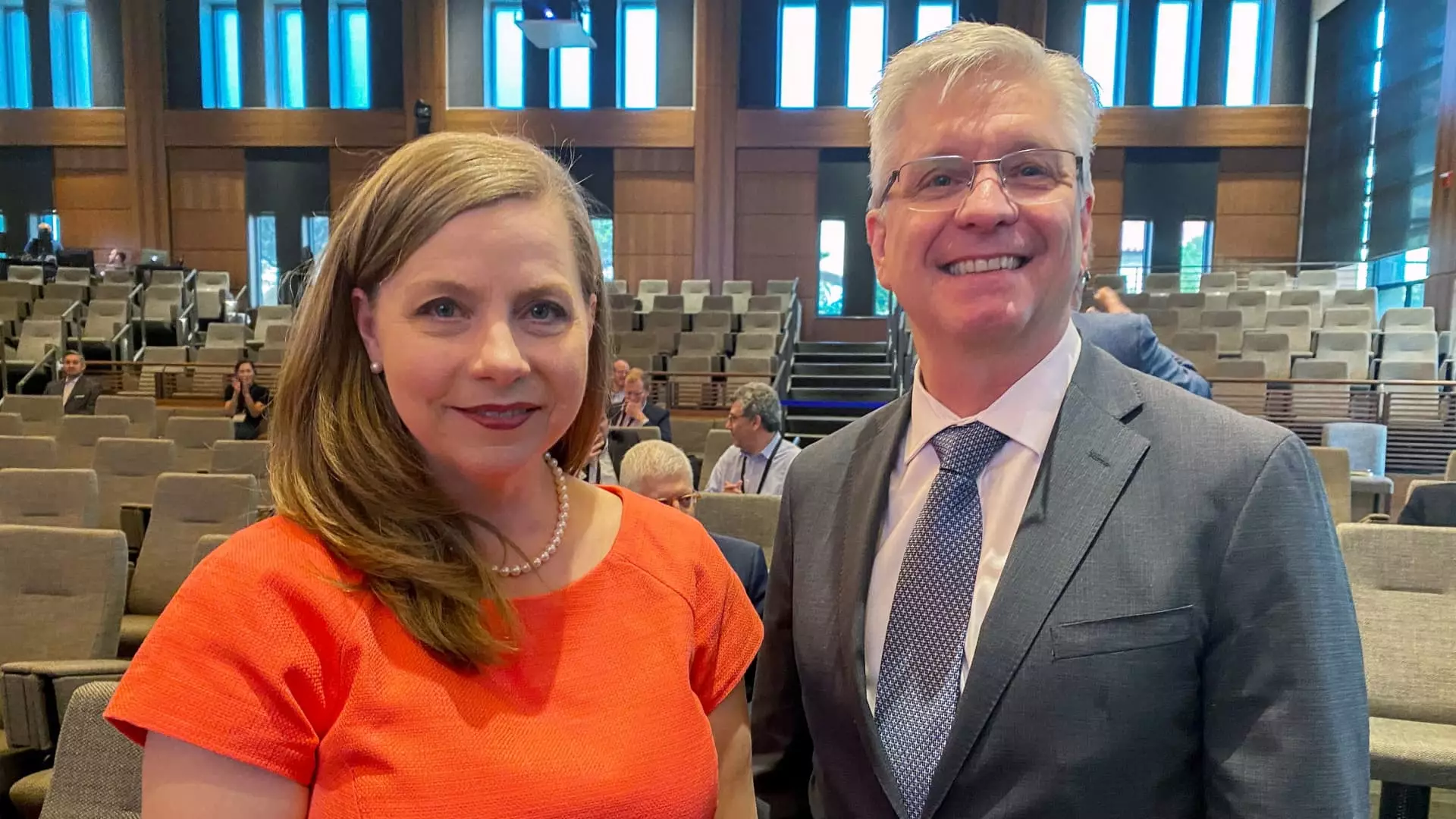The recent announcement of Michael Barr’s decision to resign from his position as Vice Chair for Supervision at the Federal Reserve has significant ramifications for the future of financial regulation in the United States. With Barr’s exit, a new chapter begins in regulatory oversight, one that may be more aligned with the pro-business stance favored by the incoming Trump administration. This shift is likely to invigorate the banking sector and propel changes that could reshape the financial landscape for years to come.
Barr’s planned departure from his role is a strategic move to avert a drawn-out legal confrontation with the Trump administration. His resignation is not merely a departure; it signifies the culmination of ongoing tensions surrounding regulatory practices and the direction of financial oversight under the Federal Reserve. By stepping down, Barr also sidesteps potential challenges to his authority that the Trump administration was contemplating. His initial indication of remaining in his position underscores the turbulent environment surrounding federal regulatory agencies, particularly under the new presidency.
This transition marks a shift from Barr’s stringent regulatory philosophy to the potential arrival of a replacement who could prioritize less restrictive measures. Given the financial sector’s hope for a more favorable regulatory climate, this could signal a return to the deregulatory tendencies that characterized the earlier years of Trump’s presidency. The implications for banks navigating a complex web of compliance are critical, particularly in light of the uncertainty previously surrounding their regulatory environment.
Since Trump’s successful election bid, financial stocks have experienced a surge, driven largely by investor speculation surrounding deregulation and increased mergers and acquisitions in the banking sector. The anticipation of industry-friendly policies represents a stark contrast to the regulatory scrutiny present under Barr’s tenure. The market’s positive response to Barr’s resignation illustrates the depth of these expectations; investors are keenly aware that changes in regulatory leadership may facilitate a more conducive business environment for banks to operate.
Further complicating the situation, Trump has yet to appoint key figures to lead various banking regulatory agencies, including the Federal Deposit Insurance Corporation (FDIC) and the Office of the Comptroller of the Currency (OCC). The lack of confirmed leadership in these roles adds another layer of uncertainty but simultaneously leaves space for reform aligned with the administration’s deregulatory agenda.
As the anticipation builds regarding Barr’s successor, two possible candidates emerge: Michelle Bowman and Christopher Waller, both sitting members of the Federal Reserve Board. Their potential ascension to the vice chair position raises questions about the direction of regulatory reform. Bowman, in particular, has been vocal in her criticism of Barr’s proposal for enhanced capital requirements known as the Basel III Endgame. Her stance foreshadows a regulatory approach that could favor the banking sector over stringent oversight.
Bowman’s background as a former community banker and Kansas bank commissioner suggests she possesses a unique understanding of the nuances of the banking system. The notion that she may advocate for “industry-friendly reforms” reflects a shift in focus, prioritizing the needs and concerns of banking institutions. Financial analyst Alexandra Steinberg Barrage highlights the possibility of significant changes to the opaque stress testing processes and merger approval timelines currently in place.
As Barr’s departure sets the stage for a possible revision of capital requirements, banks could see relief from previously proposed mandates that would have necessitated substantial capital reserves. Analysts speculate that Bowman’s influence could lead to revised regulations that are less burdensome for large institutions. The prospect of banks retaining greater capital flexibility through reduced reserves could translate into increased share buybacks and capital investments in growth initiatives.
The KBW Bank Index’s uptick following news of Barr’s resignation signals the optimism among banking stakeholders. Stocks from major banks, like Citigroup and Morgan Stanley, enjoyed significant gains, further exemplifying the market’s appetite for a more accommodating regulatory environment. Should the incoming vice chair pursue less stringent regulations, the financial sector could chart a course for expansion absent of the previous restrictions.
Finally, while Barr’s resignation represents a significant pivot towards a lighter touch in financial regulation, his ongoing position as a Federal Reserve governor may serve to maintain a balance within the central bank’s decision-making framework. The retention of a Democrat majority could provide essential checks on any extreme deregulatory practices that may emerge.
In a broader context, Barr’s decision reflects the intricate interplay of politics and finance in the United States, demonstrating how leadership changes at the Federal Reserve can directly impact market dynamics, investor confidence, and regulatory frameworks. As this situation evolves, stakeholders across the financial landscape will be keenly observing the actions taken by the coming administration to understand how these changes will shape the future of banking in the U.S.



Leave a Reply